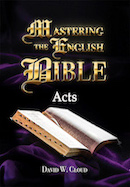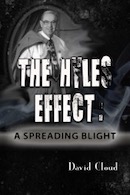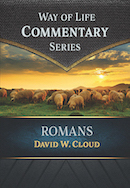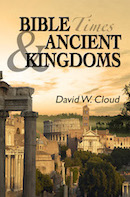866-295-4143, fbns@wayoflife.org
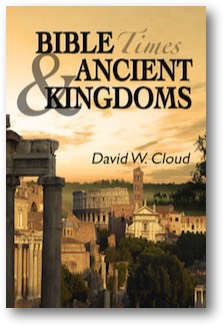
In 332, Alexander conquered Tyre.
It was one of the greatest military feats in history. The event took seven months to complete.
Ezekiel prophesied of this 250 years earlier, soon after the fall of Jerusalem in 586 BC. He described both destructions of Tyre. First, there was the destruction by Nebuchadnezzar (Eze. 26:7-11). This occurred in 573 BC after a 13-year siege. Nebuchadnezzar destroyed the city of Tyre on the coast, but he did not touch the fortress city on the island. A further destruction is described in Eze. 26:12-16 in which “they shall lay thy stones and thy timber and thy dust in the midst of the water,” and, “I will make thee like the top of a rock: thou shalt be a place to spread nets upon.” Note that the pronoun changes from “he” in verses 7-11 to “they” in verses 12-16. The second destruction was at the hand of Alexander and others who followed him.
The island city of Tyre was beautiful and well fortified, as we have described in the chapter on the Phoenician Empire. The outer walls on the side of the mainland were a massive hundred and fifty feet in height and were surmounted with battlements and towers. Originally Tyre sat on two islands, but King Hiram (c. 1050 BC) filled up the channel between them and “greatly enlarged the main island towards the east, filling up the sea with stone and rubbish to a considerable distance on that side, and obtaining thereby a broad space, which he laid out in streets and squares” (Henry Rawlinson, The Seven Great Monarchies). The one island thus created had a circumference of about two and a half miles. The city had two harbors. The main harbor was to the north, called the Sidon harbor. Ethbaal, grandson of Hiram, added another harbor called “the Egyptian harbor” because it faced south toward Egypt. There was a ship canal between the two harbors.
Alexander asked the Tyrians for permission to worship at the temple of Melqart, which he identified with the Greek god Hercules. They refused, believing that it was a ploy to gain entrance into the city. They felt secure with their navy and their walls. When Alexander made one final demand that they surrender, they killed his ambassadors and threw their bodies into the sea.
In an amazing feat of engineering and persistence, Alexander constructed a mote or causeway one kilometer long and 200 feet wide. In the process of building the causeway, Alexander used the material from the ruins of the city that Nebuchadnezzar had destroyed and literally swept the stones, timber, and dust into the sea, as Ezekiel had prophesied.
Alexander led from the front as usual, spending much of his time on the causeway, encouraging and rewarding the workers. “Alexander was present every day, conferring with the engineers, encouraging his men, and carrying stone after stone into the sea himself” (Freeman, Alexander the Great, p. 131).
As the causeway got nearer to the city, the Tyrians killed many soldiers and laborers with arrows and spears fired from the city walls and ships. To counteract this, Alexander built the highest siege towers ever used in the history of war. Each one was 20 stories tall. They had wheels on which to travel across the mote where they were used as artillery platforms with catapults and ballista to hurl missiles and large stones at the Tyrians. The towers were covered with rawhide and kept soaked with water to protect them from flaming arrows. They were also connected with a large rawhide screen to protect the causeway workers.
As a counter measure, the Tyrians made a fire ship from a horse transport filled with dried branches, pitch, and sulfur. Cauldrons of oil were hung from the masts. They weighted down the back of the ship to raise up the front and ran it onto the end of the causeway, burning up the towers and the siege equipment. That night a mighty storm damaged the causeway. “A terrific storm pounded the remains of the damaged causeway with towering waves, loosening the piles and sending tons of rock and rubble into the water” (Freeman, p. 132). Instead of giving up the project in the face of this severe setback, Alexander ordered his men to rebuild the siege towers and to continue building the mote.
Alexander was able to gain command of the sea around Tyre with a fleet of 225 ships that included those that defected from the Persians in various places. He mounted siege equipment and battering rams on some of the ships. The Tyrians poured red-hot sand over the walls onto the besieging ships, setting some on fire and burning the soldiers.
Alexander finally gained access to the south part of the city walls and personally led his army into the city.
Alexander killed 8,000 Tyrians, including 2,000 that were crucified on the beach, and sold 30,000 into slavery, including women and children. Previously, Tyre had sold Jews as slaves to the Grecians; now the Grecians enslaved the people of Tyre (Joel 3:4-6).
The island fortress city was not rebuilt, as Ezekiel 26:14 says. Parts of it fell into the sea on the south, west, and north. Ezekiel said, “For thus saith the Lord GOD; When I shall make thee a desolate city, like the cities that are not inhabited; when I shall bring up the deep upon thee, and great waters shall cover thee” (Eze. 26:19). History is silent on what caused Tyre to be submerged, but the Bible seems to describe it as a great storm. Gleason Archer observes, “But as for the island city, it apparently sank below the surface of the Mediterranean. ... All that remains of it is a series of black reefs offshore from Tyre, which surely could not have been there in the first and second millennia BC, since they pose such a threat to navigation” (Archer, “Tyre,” Encyclopedia of Bible Difficulties). The submerged parts of the ancient city can be seen on Google Earth. In 1170, the Jewish traveler Benjamin of Tudela visited Tyre and gave the following description: “A man can ascend the walls of New Tyre and see ancient Tyre, which the sea has now covered, lying at a stone’s throw from the new city. And should one care to go forth by boat, one can see the castles, market places, streets, and palaces in the bed of the sea.”
Tyre never regained its prominence as a merchant kingdom. Ezekiel 27:36 says, “and never shalt be any more.” This chapter in Ezekiel describes Tyre’s great merchandising kingdom, and it is that which ended with Alexander’s destruction of the city.
Through silting, Alexander’s causeway grew into a permanent isthmus.
Tyre was rebuilt and became a vassal to whatever power controlled the region. After Alexander’s death, the city came under control of the Seleucids in Syria. It was then captured by the Romans in 64 BC and became part of the Roman Empire. It is mentioned in Matthew 15:21-28; Mark 3:8; 7:24; Lu. 6:14; and Acts 12:20-23; 21:3-4; 27:3. The Roman ruins can be seen today. In 634, Tyre was captured by the Muslims, and in 1291 it was destroyed by Al-Ashraf Khalil.
Tyre became a place for fishermen, just as Eze. 26:14 prophesied. In 1697, H. Maundrell visited Tyre and said it was inhabited by “a few poor wretches, harboring themselves in vaults and subsisting chiefly on fishing” (A Journey from Aleppo to Jerusalem). On a visit to Tyre in 1838, Andrew Bonar and R.M. M’Cheyne wrote, “Alexander the Great seems actually to have scraped away the very rubbish as well as the stones of Old Tyre to construct his causeway; and now the bare rocks along the shore, on some part of which the ancient city must have stood, are literally a place for the spreading of nets. The first man we met in the gate of Tyre was a fisherman carrying a load of fish” (Narrative of a Visit to the Holy Land, p. 262). In 1839, David Roberts made drawings of fishermen with their nets with the ruins of the ancient city in the background.
There is still a fishing village on the north side of the isthmus, and “shops are full of fishing paraphernalia” (CNN Travel, Aug. 25, 2017).
There is still a place called Tyre today, but it is a place of little consequence. The “crowning city” is long gone, just as God’s Word said.
- Receive these reports by email
- www.wayoflife.org
______________________
Sharing Policy: Much of our material is available for free, such as the hundreds of articles at the Way of Life web site. Other items we sell to help fund our expensive literature and foreign church planting ministries. Way of Life's content falls into two categories: sharable and non-sharable. Things that we encourage you to share include the audio sermons, O Timothy magazine, FBIS articles, and the free eVideos and free eBooks. You are welcome to make copies of these at your own expense and share them with friends and family. You may also post parts of reports and/or entire reports to websites, blogs, etc as long as you give proper credit (citation). A link to the original report is very much appreciated as the reports are frequently updated and/or expanded. Things we do not want copied and distributed are "Store" items like the Fundamental Baptist Digital Library, print editions of our books, electronic editions of the books that we sell, the videos that we sell, etc. The items have taken years to produce at enormous expense in time and money, and we use the income from sales to help fund the ministry. We trust that your Christian honesty will preserve the integrity of this policy. "For the scripture saith, Thou shalt not muzzle the ox that treadeth out the corn. And, The labourer is worthy of his reward" (1 Timothy 5:18). Questions? support@wayoflife.org
Goal:Distributed by Way of Life Literature Inc., the Fundamental Baptist Information Service is an e-mail posting for Bible-believing Christians. Established in 1974, Way of Life Literature is a fundamental Baptist preaching and publishing ministry based in Bethel Baptist Church, London, Ontario, of which Wilbert Unger is the founding Pastor. Brother Cloud lives in South Asia where he has been a church planting missionary since 1979. Our primary goal with the FBIS is to provide material to assist preachers in the edification and protection of the churches.
Offering: Offerings are welcome if you care to make one. If you have been helped and/or blessed by our material offerings can be mailed or made online with with Visa, Mastercard, Discover, or Paypal. For information see: www.wayoflife.org/about/makeanoffering.html.


